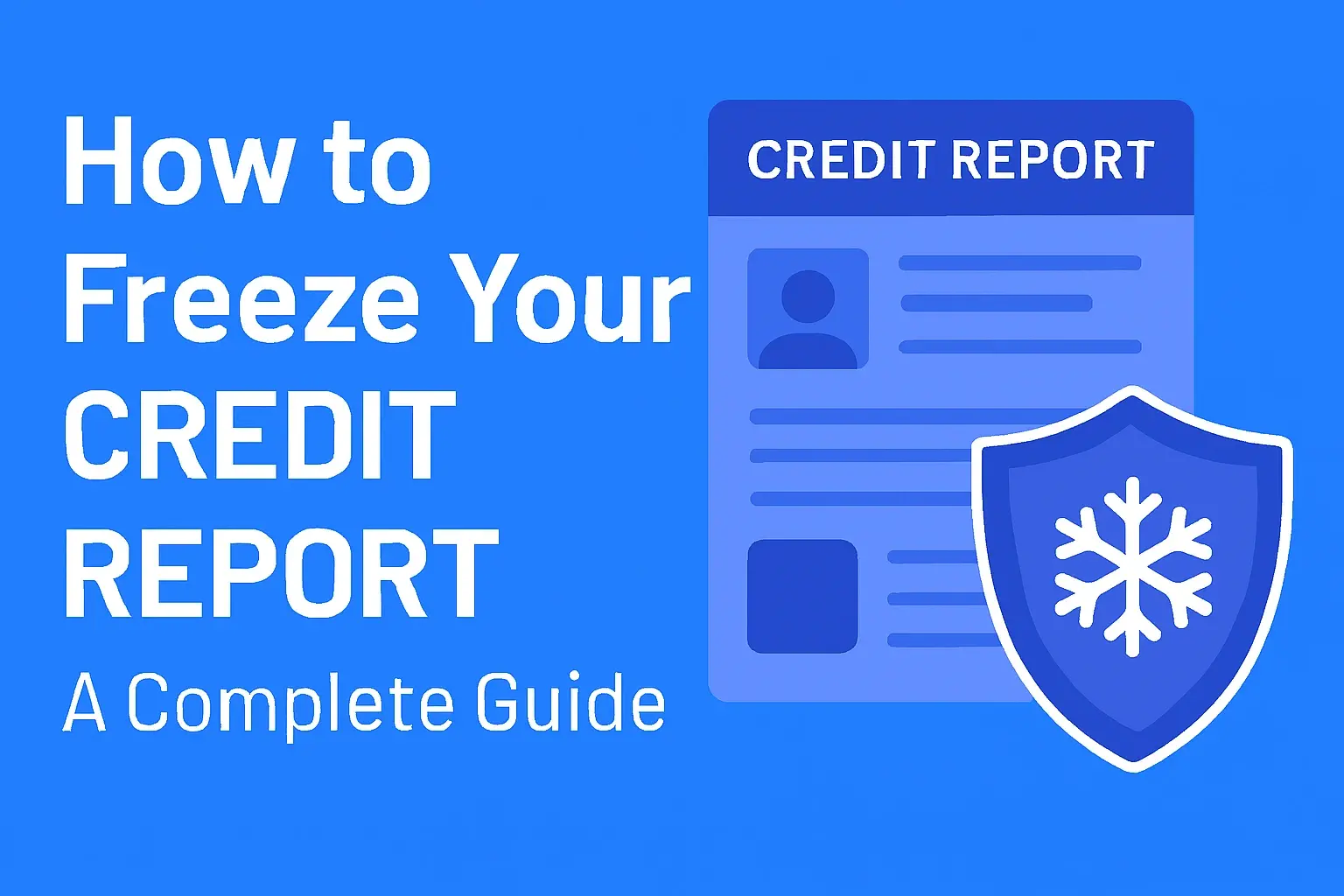-
Posted on: 05 Feb 2025

-
Unlock the secrets to superior financial standing with our comprehensive guide to Tier One credit scores. Discover what defines these elite scores, how they are achieved, and the unparalleled advantages they unlock for your financial future. This is your definitive resource for mastering credit excellence.
What Are Tier One Credit Scores?
In the realm of creditworthiness, a "Tier One" credit score represents the pinnacle of financial responsibility and reliability. While specific terminology can vary slightly between credit bureaus and lenders, the concept remains consistent: a Tier One score signifies an exceptional credit history, typically falling within the highest scoring brackets. For most major credit scoring models, such as FICO and VantageScore, this translates to scores generally above 780, often reaching into the 800s. These scores are not merely numbers; they are a testament to a borrower's consistent ability to manage debt responsibly, repay obligations on time, and maintain a healthy credit profile over an extended period. Achieving this elite status opens doors to the most favorable financial products and opportunities available in the market.
Understanding what constitutes a Tier One credit score is the first crucial step for anyone aspiring to achieve superior financial health. It involves recognizing the scoring ranges, the underlying factors that contribute to these high scores, and the significant advantages that come with possessing such an asset. This guide aims to demystify the concept, providing actionable insights and a clear roadmap for attaining and sustaining this coveted financial standing. We will delve into the nuances of credit scoring, explore the behaviors that cultivate excellent credit, and highlight the tangible benefits that set Tier One individuals apart in their financial journeys.
The Unrivaled Importance of Tier One Credit
The significance of a Tier One credit score cannot be overstated in today's financial landscape. It acts as a powerful financial passport, granting access to opportunities and benefits that are simply unavailable to those with average or below-average credit. Lenders view individuals with Tier One scores as exceptionally low-risk borrowers, making them highly attractive to financial institutions. This perception translates directly into tangible advantages, most notably the ability to secure the lowest interest rates on loans, mortgages, and credit cards. Over the lifespan of a significant loan, such as a mortgage, even a small difference in interest rate can result in tens of thousands of dollars saved.
Beyond cost savings, a Tier One credit score enhances your negotiating power. When applying for credit, you are in a stronger position to dictate terms, secure higher credit limits, and access premium rewards programs. Furthermore, exceptional credit is increasingly becoming a factor in non-lending contexts, such as apartment rentals, insurance premiums, and even some employment opportunities. A strong credit score signals a level of responsibility and trustworthiness that employers and landlords find appealing. In essence, a Tier One credit score is not just about borrowing money; it's about demonstrating a high level of financial maturity and discipline that permeates various aspects of life.
The economic environment of 2025 continues to emphasize the value of sound financial management. With fluctuating interest rates and evolving lending practices, having a Tier One credit score provides a significant buffer against economic uncertainties. It ensures that even during challenging times, you remain a preferred customer for financial institutions, capable of accessing the credit you need at the most advantageous terms. This resilience is a cornerstone of long-term financial security and prosperity.
Credit Scoring Models and Tiers
Understanding Tier One credit scores requires a basic familiarity with the models that generate them. The two most prominent credit scoring models in the United States are FICO (Fair Isaac Corporation) and VantageScore. Both systems generate scores on a scale, typically from 300 to 850, and categorize these scores into different tiers representing varying levels of credit risk.
FICO Score Ranges (General):
- Exceptional: 800-850
- Very Good: 740-799
- Good: 670-739
- Fair: 580-669
- Poor: 300-579
VantageScore Ranges (General):
- Excellent: 781-850
- Good: 661-780
- Fair: 601-660
- Poor: 500-600
- Very Poor: 300-499
While the exact numbers can differ slightly between FICO versions (e.g., FICO Score 8, FICO Score 9, FICO Score 10) and VantageScore versions (e.g., VantageScore 3.0, VantageScore 4.0), the general principle holds: Tier One credit scores reside at the very top of these scales, typically defined as scores above 780 or 800, depending on the model. These are the scores that lenders associate with the lowest probability of default.
The Meaning of Elite Credit
Possessing a Tier One credit score signifies more than just good financial habits; it indicates a history of exceptional financial management. It tells lenders that you are not only capable of meeting your financial obligations but that you do so with remarkable consistency and minimal risk. This elite status is earned over time through diligent application of sound credit principles. It's the result of years of responsible borrowing, timely payments, and strategic credit utilization. In essence, a Tier One score is a badge of honor in the financial world, a clear indicator of trustworthiness and reliability.
Key Factors Driving Tier One Credit Scores
Achieving a Tier One credit score is a multifaceted endeavor, influenced by several key factors that credit bureaus meticulously analyze. While the exact weighting of each factor can vary between scoring models, their impact on your overall score is significant. Understanding these components is crucial for developing a strategy to build and maintain an exceptional credit profile.
Payment History: The Cornerstone
Payment history is the single most influential factor in determining your credit score, accounting for approximately 35% of your FICO score. This metric reflects whether you pay your bills on time. For Tier One credit, this means an absolutely flawless record. Even a single late payment (30 days or more past due) can significantly damage your score and make achieving elite status much harder. This includes not only credit card payments but also loans, mortgages, and even utility bills if they are reported to the credit bureaus after significant delinquency.
What Tier One borrowers do:
- Pay all bills on or before the due date, every single month.
- Set up automatic payments for recurring bills to avoid missed deadlines.
- Maintain a perfect record of on-time payments across all credit accounts for many years.
Credit Utilization Ratio: Keeping it Low
Credit utilization refers to the amount of credit you are using compared to your total available credit. This factor accounts for about 30% of your FICO score. A low credit utilization ratio is a hallmark of responsible credit management. Ideally, for Tier One scores, this ratio should be kept below 10%, and ideally below 7%. This means that if you have a credit card with a $10,000 limit, you should aim to keep your balance below $1,000, and even better, below $700.
What Tier One borrowers do:
- Maintain balances significantly lower than their credit limits.
- Pay down credit card balances in full each month, even if they don't technically carry a balance past the due date.
- Avoid maxing out credit cards, even temporarily.
- Consider requesting credit limit increases on existing cards to lower their utilization ratio without increasing spending.
Length of Credit History: Time is a Virtue
The average age of your credit accounts and the age of your oldest account contribute about 15% to your FICO score. A longer credit history generally indicates more experience managing credit, which is viewed favorably. Tier One scores are typically held by individuals who have been managing credit responsibly for a significant period, often 10 years or more.
What Tier One borrowers do:
- Avoid closing old, unused credit accounts, especially those with a long history and good standing, as this can reduce the average age of their accounts.
- Maintain at least one credit card account that has been open and in good standing for many years.
Credit Mix: Demonstrating Versatility
Having a mix of different types of credit – such as credit cards, installment loans (like mortgages or auto loans), and potentially a home equity line of credit – can positively impact your score, accounting for about 10% of your FICO score. This demonstrates that you can manage various forms of credit responsibly. However, this factor is less critical than payment history and utilization, and it's not advisable to open new accounts solely to improve your credit mix.
What Tier One borrowers do:
- Possess a healthy combination of revolving credit (credit cards) and installment credit (loans) managed responsibly.
- Do not take out unnecessary loans or credit cards just to diversify their credit mix.
New Credit and Inquiries: Exercising Caution
Opening several new credit accounts in a short period or having numerous hard inquiries (when a lender checks your credit for an application) can negatively affect your score, accounting for about 10% of your FICO score. While opening new credit is sometimes necessary, Tier One individuals are strategic about it, avoiding excessive applications.
What Tier One borrowers do:
- Apply for new credit only when necessary and after careful consideration.
- Space out credit applications to avoid triggering concerns about credit seeking.
- Understand that rate shopping for certain loans (like mortgages or auto loans) within a short period typically counts as a single inquiry.
By focusing on these core components, individuals can systematically build the foundation for a Tier One credit score. It's a marathon, not a sprint, requiring consistent discipline and a strategic approach to credit management.
Achieving and Maintaining Tier One Status
Attaining a Tier One credit score is a journey that requires dedication and consistent application of sound financial principles. Once achieved, maintaining this elite status demands ongoing vigilance. Here’s a breakdown of the steps and strategies involved.
Building a Strong Foundation
For those starting with less-than-perfect credit or building it from scratch, the initial steps are crucial:
- Secure a Credit Card: If you have no credit history, consider a secured credit card. This requires a cash deposit that typically equals your credit limit, minimizing the lender's risk. Use it for small, regular purchases and pay it off in full each month.
- Become an Authorized User: If a trusted family member with excellent credit is willing, they can add you as an authorized user to one of their long-standing, well-managed credit cards. Their positive payment history can then reflect on your credit report.
- Pay Bills Religiously On Time: This cannot be stressed enough. Set up reminders or automatic payments for all your bills – credit cards, loans, utilities, rent (if reported). Aim for 100% on-time payments.
- Keep Balances Low: Aim to keep your credit utilization ratio below 30%, and ideally below 10%, on all credit cards. Don't carry balances month-to-month if you can avoid it.
Strategies for Reaching the Elite Tier
Once you have established a solid credit history, these strategies can help you push towards and achieve Tier One status:
- Maintain Very Low Credit Utilization: As mentioned, keeping utilization below 10% is key. This might involve paying down balances before the statement closing date or ensuring you have ample available credit.
- Age Your Accounts: The longer your credit accounts have been open and in good standing, the better. Avoid closing old, well-managed accounts, even if you don't use them often.
- Diversify Your Credit (Strategically): While not the most critical factor, having a mix of credit types (e.g., a credit card, a car loan, a mortgage) can be beneficial. Only do this if you genuinely need these types of credit and can manage them responsibly.
- Monitor Your Credit Reports Regularly: Obtain your free credit reports from AnnualCreditReport.com at least annually and review them for errors. Dispute any inaccuracies promptly, as errors can significantly impact your score.
- Be Mindful of New Credit Applications: Avoid applying for multiple credit accounts in a short period. Each hard inquiry can slightly lower your score.
- Consider Premium Credit Cards: Once you have a strong credit score, you may qualify for premium credit cards with higher limits. Using these responsibly and keeping utilization low can further boost your credit profile.
Maintaining Tier One Status Long-Term
Achieving a Tier One score is an accomplishment, but maintaining it requires ongoing discipline:
- Never Miss a Payment: This is paramount. Automate payments or set multiple reminders.
- Keep Utilization Low: Continue to monitor and manage your credit utilization ratios diligently.
- Avoid Unnecessary Credit Applications: Be selective about applying for new credit.
- Review Credit Reports Annually: Stay vigilant for any errors or fraudulent activity.
- Manage Existing Accounts Wisely: Continue to use credit cards for purchases you can afford and pay them off, rather than relying on them for extended financing.
- Be Aware of Credit Score Changes: Understand that credit scores can fluctuate. Stay informed about your score and the factors influencing it.
Maintaining Tier One status is about consistent, responsible financial behavior over an extended period. It’s about demonstrating to lenders, year after year, that you are an exceptionally low-risk borrower.
The Exclusive Benefits of a Tier One Credit Score
Possessing a Tier One credit score unlocks a world of financial advantages, making it a highly sought-after financial asset. These benefits extend far beyond simply being approved for credit; they represent significant cost savings, enhanced financial flexibility, and greater peace of mind.
Lowest Interest Rates
This is perhaps the most significant and immediate benefit. Lenders offer their most competitive interest rates to borrowers with Tier One credit scores because they are considered the least risky. This applies across the board:
- Mortgages: A Tier One score can mean a lower interest rate on your home loan, saving you tens of thousands of dollars over the life of the loan. For example, a 0.5% difference on a $300,000, 30-year mortgage can save over $50,000.
- Auto Loans: Securing a low APR on a car loan means lower monthly payments and less interest paid overall.
- Personal Loans: Access to the most favorable rates for personal loans, allowing for more affordable debt consolidation or financing for large purchases.
- Credit Cards: While APRs on credit cards are often high, Tier One scores qualify you for cards with the lowest possible introductory and ongoing APRs, as well as premium rewards cards.
Higher Credit Limits
With a Tier One score, lenders are more confident in extending larger lines of credit. This provides greater financial flexibility for emergencies, large purchases, or strategic use of credit for rewards and benefits. Higher limits also help maintain a lower credit utilization ratio, further bolstering your score.
Better Loan Terms and Negotiating Power
Beyond just interest rates, Tier One credit scores often grant access to more favorable loan terms, such as longer repayment periods, lower fees, or reduced down payment requirements. You also gain significant negotiating power. Lenders are eager for your business, making them more amenable to discussing terms and conditions.
Easier Approval for Premium Credit Cards
The most coveted rewards credit cards, offering lucrative points, miles, travel perks, and statement credits, typically require excellent or exceptional credit. A Tier One score ensures you can qualify for these cards, maximizing your rewards and benefits from everyday spending.
Reduced Insurance Premiums
In many states, insurance companies use credit-based insurance scores to help determine premiums for auto and homeowners insurance. Individuals with higher credit scores often pay less for insurance because they are statistically less likely to file claims.
Easier Rental Approval
Landlords frequently check credit scores to assess a prospective tenant's reliability. A Tier One score makes you a highly desirable tenant, increasing your chances of securing desirable rental properties, often with fewer or no conditions like larger security deposits.
Potential for Employment Opportunities
Certain employers, particularly in financial services or roles involving handling money or sensitive data, may conduct credit checks as part of their background screening process. A strong credit history can be seen as an indicator of responsibility and trustworthiness.
Financial Resilience and Peace of Mind
Ultimately, a Tier One credit score provides a significant degree of financial resilience. It means you have access to credit when you need it, at the best possible terms, which can be invaluable during unexpected life events or economic downturns. This security translates into greater peace of mind.
Debunking Common Myths and Misconceptions
Despite the importance of credit scores, many misconceptions surround them, particularly concerning elite-level credit. Understanding the truth behind these myths is crucial for effective credit management.
Myth 1: Closing Old Accounts Boosts Your Score
Reality: In most cases, closing an old credit account can actually hurt your score. It reduces your average age of credit history and can increase your credit utilization ratio if you carry balances on other cards. Unless an old card has a high annual fee or poor terms you no longer need, it's often best to keep it open and unused.
Myth 2: You Need to Carry a Balance to Build Credit
Reality: This is a persistent myth. You do not need to pay interest to build credit. The most critical factor is making on-time payments. Carrying a balance increases your credit utilization and costs you money in interest. The ideal strategy for building and maintaining excellent credit is to pay your statement balance in full every month.
Myth 3: Checking Your Own Credit Score Hurts It
Reality: Checking your own credit score or credit report is considered a "soft inquiry" and does not affect your score at all. Only "hard inquiries," which occur when you apply for new credit, can have a minor, temporary impact. Regularly checking your credit is essential for monitoring its health.
Myth 4: Credit Scores Are Static
Reality: Credit scores are dynamic and can change based on your credit activity. While Tier One scores are generally stable, negative events like late payments or high utilization can cause them to drop, and positive actions can help them improve or remain high.
Myth 5: Everyone Uses the Same Credit Score
Reality: There are many different credit scoring models (FICO, VantageScore, and various industry-specific versions). Lenders choose which model and which version of that model to use, meaning you might have slightly different scores depending on where you apply. However, the underlying principles for achieving a high score are consistent across most models.
Myth 6: A Single Late Payment Ruins Your Score Forever
Reality: While a single late payment can significantly lower your score, it doesn't ruin it forever. The impact diminishes over time, especially if you maintain a strong record of on-time payments afterward. However, for Tier One status, even one late payment can be a major setback.
Dispelling these myths empowers individuals to make informed decisions about their credit management, steering them away from detrimental practices and towards strategies that truly foster elite creditworthiness.
Tier One Credit in 2025 and Beyond
The landscape of credit scoring and lending is continually evolving. As we move further into 2025 and beyond, several trends are shaping the significance and accessibility of Tier One credit scores.
Advanced Scoring Models
Credit scoring models are becoming more sophisticated. Newer versions of FICO and VantageScore are incorporating more data points and advanced algorithms. For instance, FICO 10 T introduces trended data, which analyzes your credit behavior over time, not just a snapshot. This means consistent, long-term responsible behavior is even more critical for maintaining top scores. The focus remains on predictive accuracy – identifying borrowers most likely to repay their debts.
The Continued Premium on Creditworthiness
In an economic climate that can be unpredictable, financial institutions continue to place a high premium on creditworthiness. Tier One credit scores will remain the benchmark for accessing the most favorable financial products. Lenders are increasingly reliant on these scores to mitigate risk, especially as interest rates and economic conditions fluctuate. The ability to secure low-interest financing will be a significant advantage for individuals with elite credit.
Fintech and Alternative Data
The rise of financial technology (fintech) companies is introducing new ways to assess creditworthiness, sometimes incorporating alternative data such as rent payments, utility bills, and even cash flow analysis from bank accounts. While these may help individuals with limited traditional credit history, they are unlikely to replace the fundamental importance of a strong traditional credit score for achieving Tier One status. Instead, they may serve as complementary tools. For those aiming for Tier One, focusing on the core credit factors remains paramount.
Economic Uncertainty and Credit Strength
As economic conditions evolve, the value of a strong credit score becomes even more pronounced. In times of inflation, interest rate hikes, or potential economic slowdowns, having a Tier One credit score provides a significant safety net. It ensures access to credit at the best possible rates, which can be crucial for navigating unexpected expenses or taking advantage of investment opportunities.
Sustainability of Tier One Status
Maintaining Tier One credit in the coming years will require continued diligence. The emphasis will likely remain on consistent on-time payments, extremely low credit utilization, and a long history of responsible credit management. Lenders will continue to reward individuals who demonstrate a long-term commitment to financial health. The strategies outlined in this guide – meticulous payment habits, low utilization, and mindful credit application – will remain the bedrock of achieving and sustaining elite creditworthiness.
In conclusion, while the tools and models for assessing credit may evolve, the core principles of building and maintaining Tier One credit will endure. A Tier One credit score is not just a number; it's a reflection of sustained financial discipline and a key enabler of financial opportunity and security in the years ahead.
Example Scenario: The Mortgage Application in 2025
Consider Sarah, who has a Tier One credit score of 820. She is applying for a $400,000 mortgage with a 30-year term in 2025. Because of her exceptional credit, she qualifies for an interest rate of 6.0%. Her estimated monthly principal and interest payment would be approximately $2,398. If she had a score of 740 (considered very good but not Tier One), she might qualify for a rate of 6.5%. This seemingly small 0.5% difference would increase her monthly payment to approximately $2,528, costing her an additional $130 per month, or over $46,000 in interest over the life of the loan. This stark example illustrates the tangible financial power of a Tier One credit score.
Table: Impact of Credit Score on Mortgage Interest Rate (Illustrative 2025 Data)
Credit Score Range Estimated APR (30-Year Fixed Mortgage) Monthly P&I Payment (on $400,000 Loan) Total Interest Paid (Over 30 Years) 800+ (Tier One) 6.0% $2,398 $463,280 740-799 (Very Good) 6.5% $2,528 $510,080 670-739 (Good) 7.0% $2,661 $557,960 580-669 (Fair) 8.0% $2,936 $656,960 Note: These figures are illustrative and based on current market trends and common scoring model impacts in 2025. Actual rates may vary.
Conclusion
Achieving and maintaining a Tier One credit score is the ultimate goal for discerning individuals seeking unparalleled financial advantage. It signifies a level of financial maturity and reliability that unlocks the most favorable terms on loans, credit cards, and insurance, while also providing greater flexibility and peace of mind. By consistently prioritizing on-time payments, maintaining exceptionally low credit utilization ratios, and managing credit accounts responsibly over time, you lay the groundwork for this elite financial status.
The journey to Tier One credit is a testament to disciplined financial behavior. It requires understanding the intricate factors that influence your score and applying that knowledge strategically. While the path demands patience and vigilance, the rewards – significant savings, enhanced negotiating power, and robust financial resilience – are immeasurable. In the dynamic financial landscape of 2025 and beyond, your Tier One credit score will continue to be your most powerful asset, opening doors to opportunities and safeguarding your financial well-being. Start implementing these strategies today to build your credit empire.











